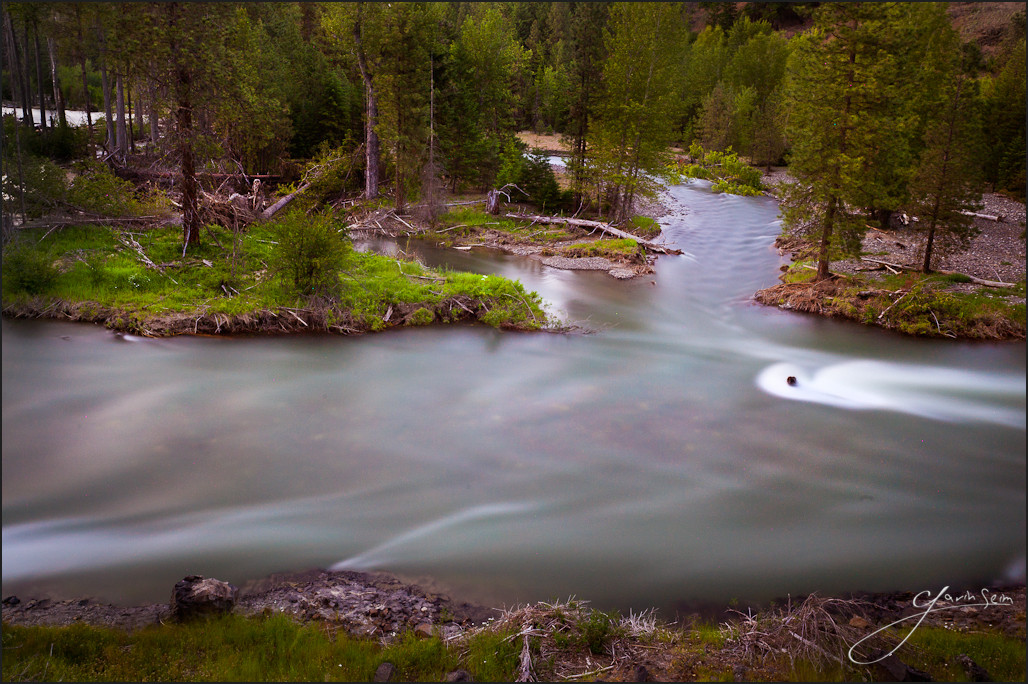
This is for you photographers. It’s an 8 minute exposure I did just after sunset on the river. I processed it with the Velvius preset from Power Workflow3. It’s not a stunning image and that’s not why I posted it. I felt it was a good image to use to talk a bit about pixel science.
To me, what merits discussion is the noise. I’ve done images much longer than 8 minutes. The longer the exposure, the more potential for noise to be generated as the sensor heats up. But, as myself and some others have found, the warmer the environment, the worse it seems to get. It was probably in the low 70’s here in the mountains, and the warmer temperature seemed to make a great deal of difference compared to images I’ve done in cooler environments.
Look at the image and the crop section I posted below. The noise produces a banding-like effect on the frame that really reduces quality. The large color artifacts are easy enough to fix, but there’s an almost patterned, under-the-surface noise that really is a challenge. And this was with in camera long exposure reduction turned ON.
I talked about this type of noise in depth in the making of 140 Minutes of Night ( 2+ hour long exposure) and looked at techniques to deal with it, but it’s not easy to correct. When you get into bad heat noise, the plethora of noise plugins and tools we have won’t just take it away. Well, they will, but only at the cost of losing a lot of detail everywhere else. And that’s just not acceptable.










